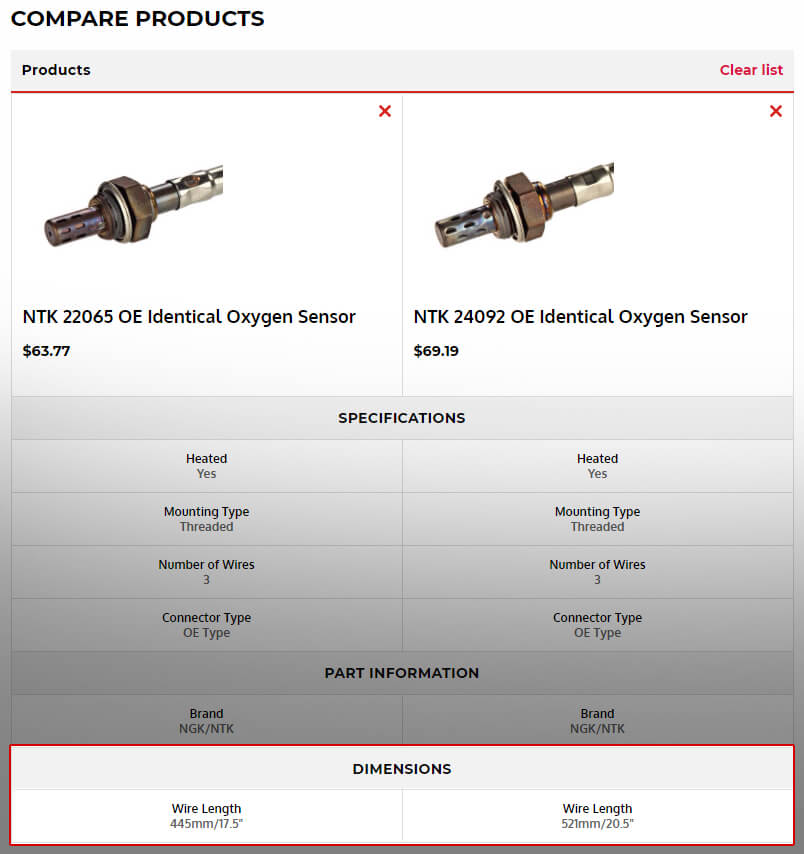Finding and Comparing NGK Part Specifications
Part specifications serve an important aspect in choosing the correct part. The SparkPlugs.com Family of sites has multiple tools to assist you in deciphering part numbers and features.
Part Number Charts:
From any page on the site, click on the "Learning Center" link in the footer.

Click on "Charts & Tools".
Use the Heat Range Conversion Chart to compare the heat ranges between spark plug brands.
Use NGK's Numbering Systems to decipher NGK's alphanumeric part system. A numbering system is also available for NGK spark plug resistor caps.
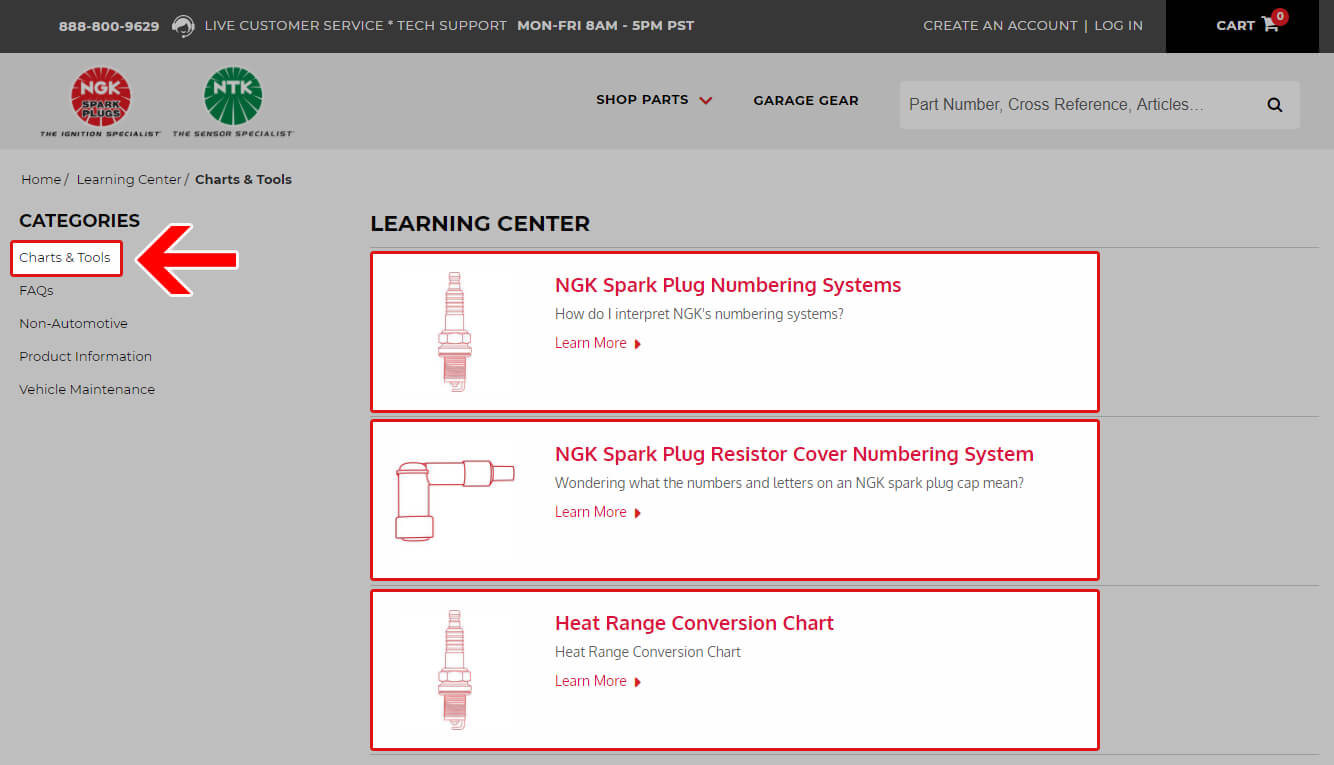
Part Specification Listings:
All available part specifications have been included in the part details page.
Use the site search box to find the part number you wish to see the specs for. Click on the "Product Specifications" tab. Available specs may include dimensions, features, materials, longevity and warranted life.
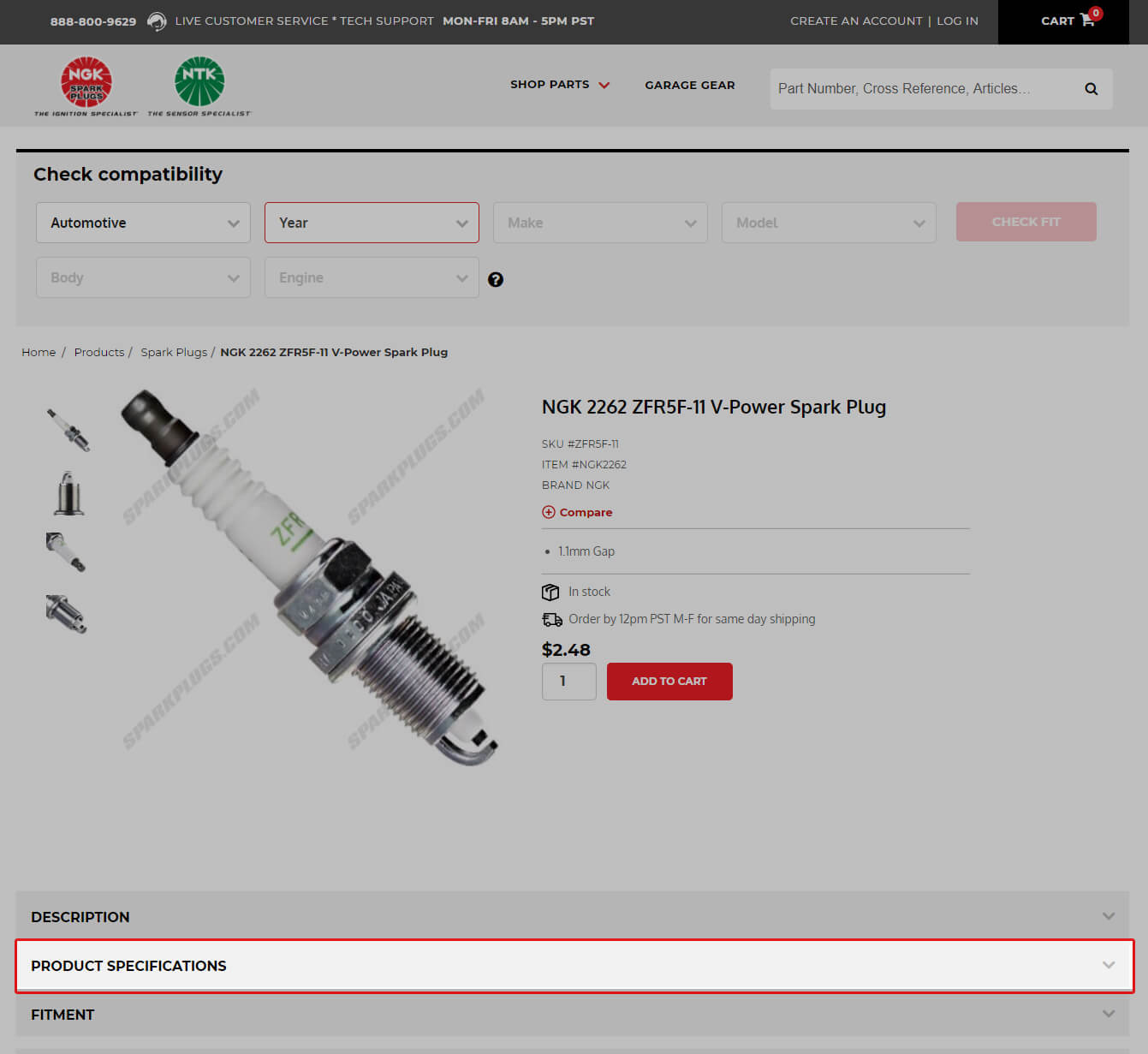
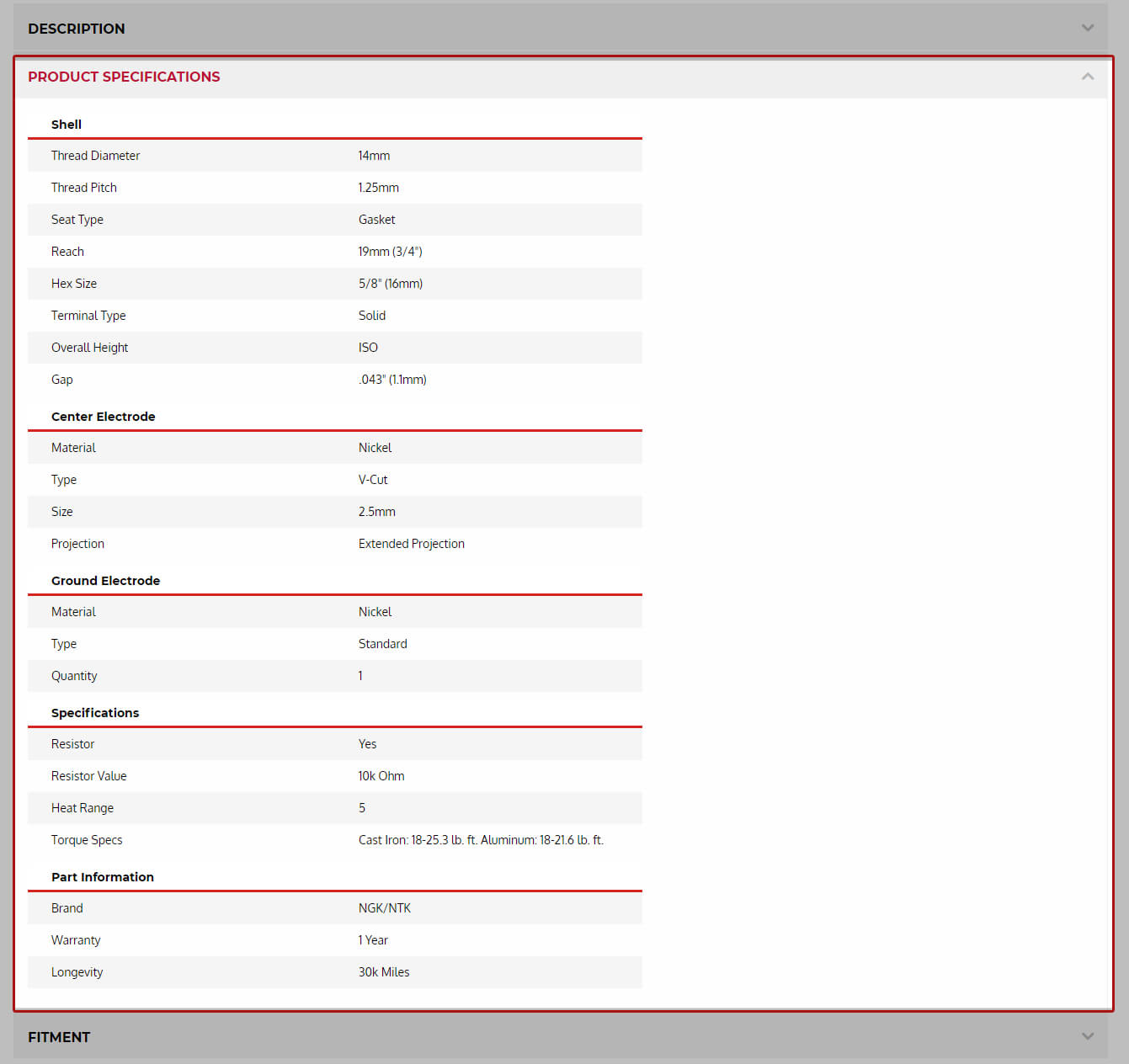
Compare Tool:
Use the "Compare" button to select up to 4 parts within the same product type and compare their specs. Available specs may include dimensions, features, materials, longevity and warranted life.
Click the "Compare" button on all parts you'd like to compare the specs on.

Click the "Compare Now" button when you're finished selecting parts. 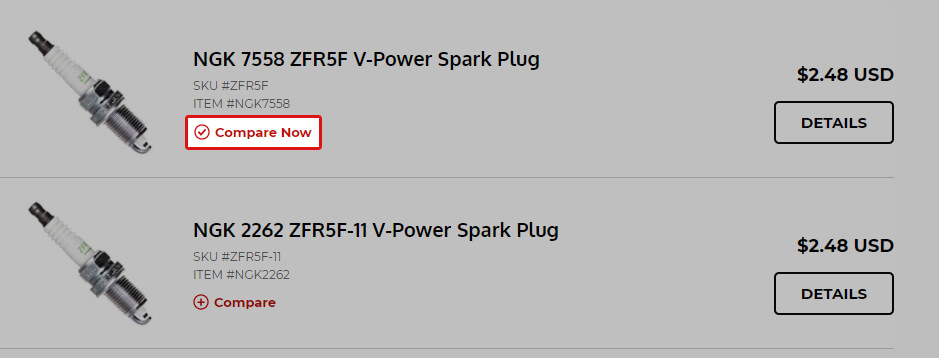
Click the red "X" next to a product to remove it from the comparison, or click "Clear list" to remove all items.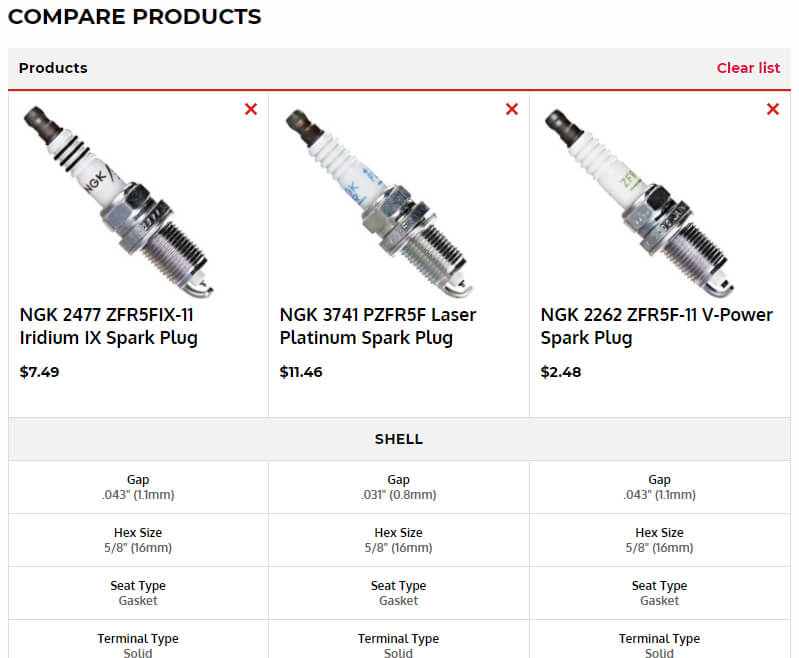
Examples of how to use these tools...
#1 - What is the difference between NGK ZFR5F and ZFR5F-11?
Using the NGK Numbering System, we see that the second set of numbers at the end of a part designates the gap setting. ZFR5F-11 has a 1.1mm or .044" gap. How about ZFR5F, which doesn't have a gap designation? According to our chart, as an automotive plug, it likely has a 0.8mm or 0.9mm gap.
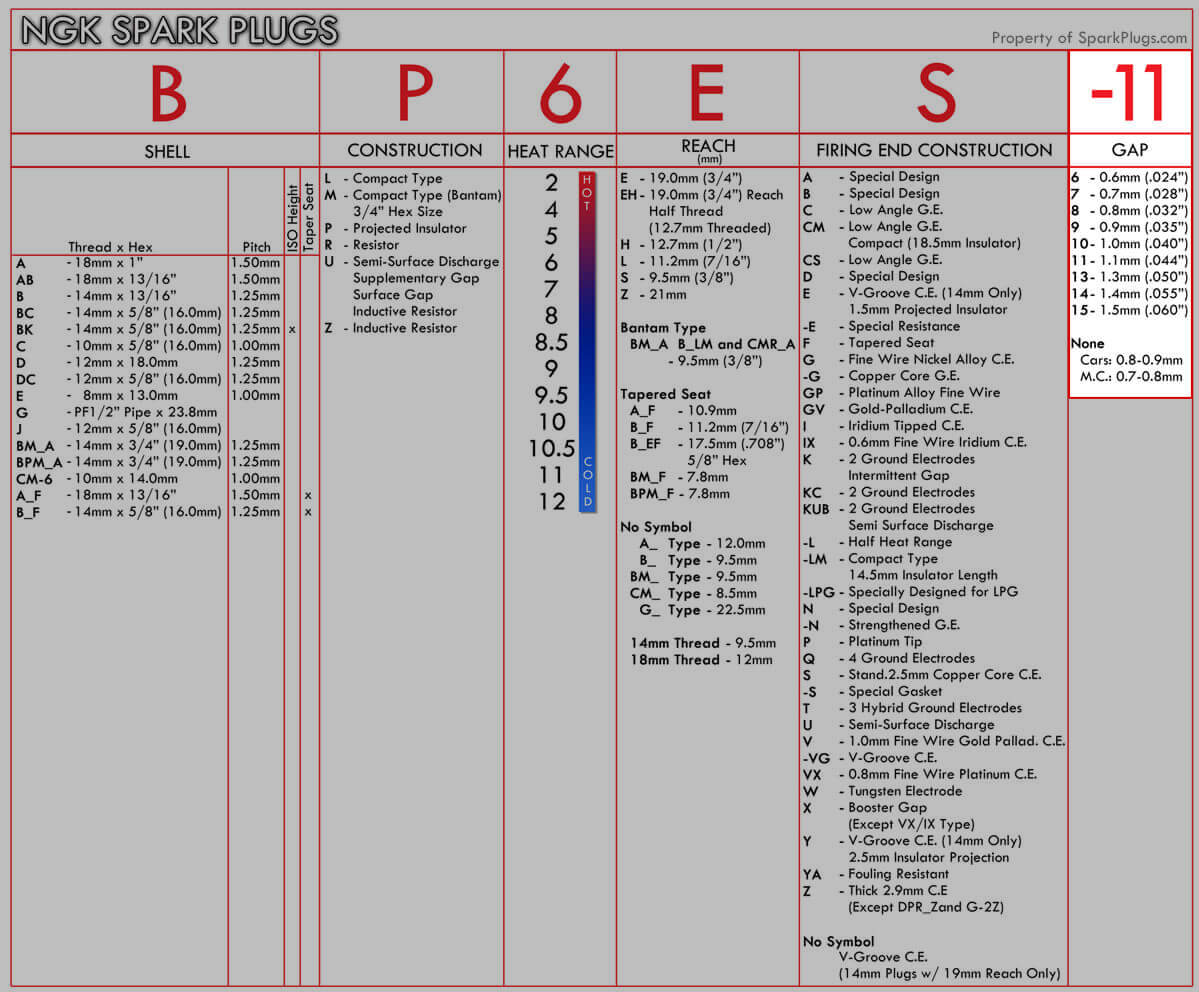
We can confirm by looking at the specs tab for this plug, which identifies NGK ZFR5F as having a 0.8mm or .031" gap.

#2 - When searching for DCPR8E, there are 3 different stock numbers. What is the difference between NGK 4339, 92238 and 4179?
We can use the specs tab to find key differences, however, in the case of multiple stock numbers for the same part number, the part title and bullet points can also be helpful.
- NGK 4339 features a removable terminal nut.
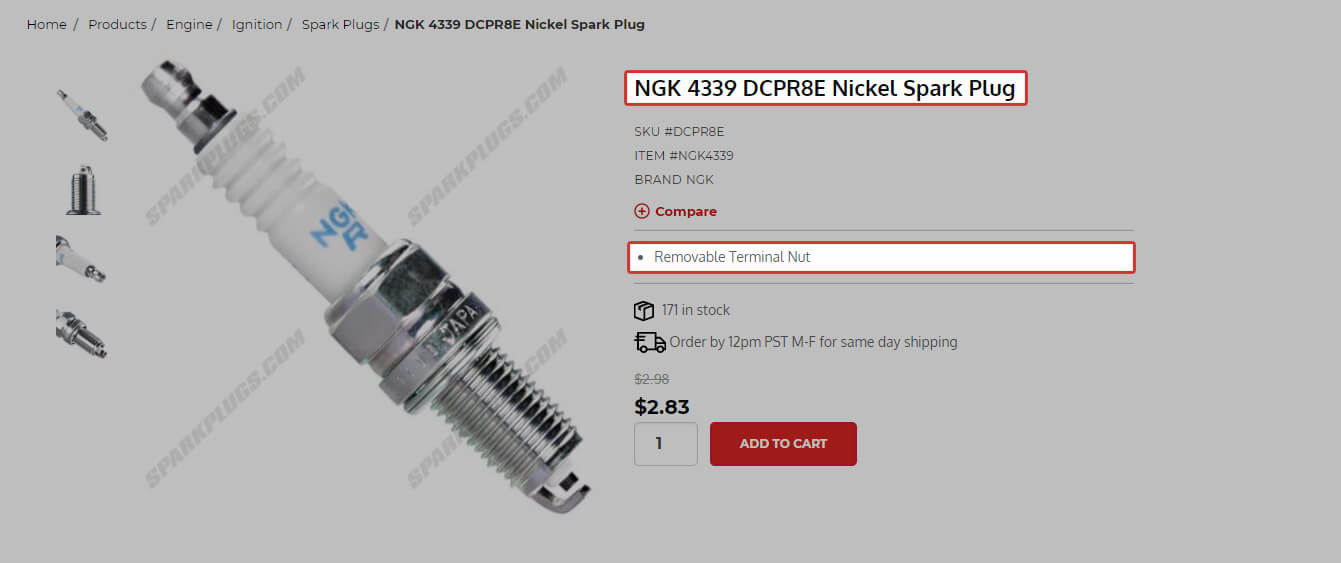
- NGK 92238 also features a removable terminal nut, but arrives in a blister pack.
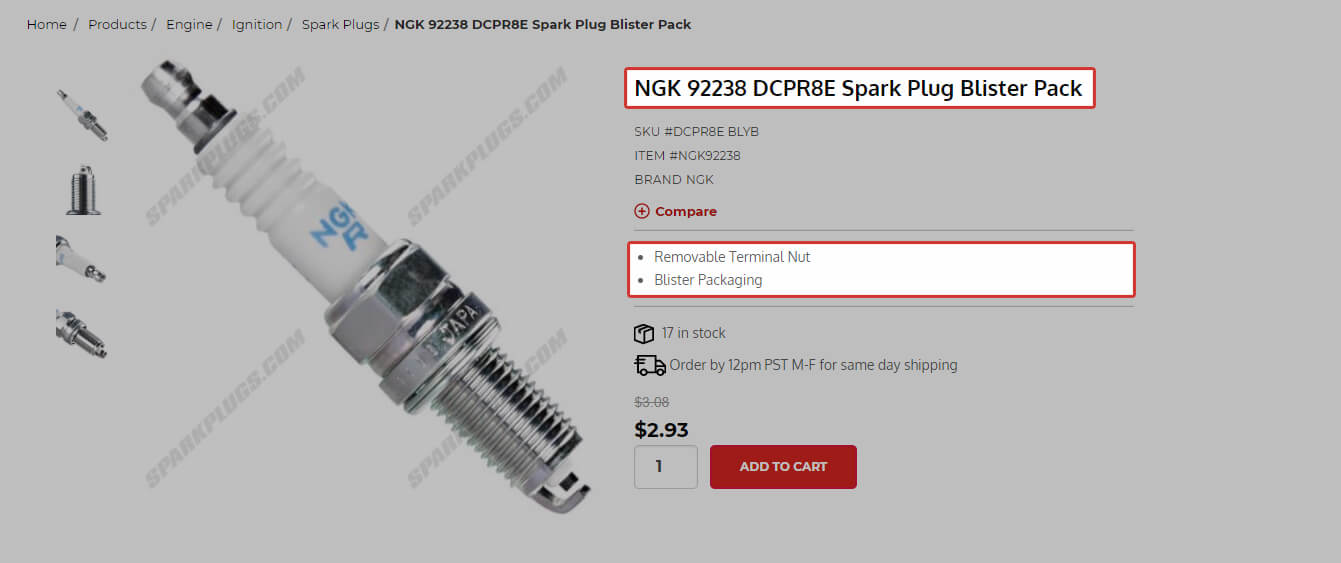
- NGK 4179 features a solid terminal.
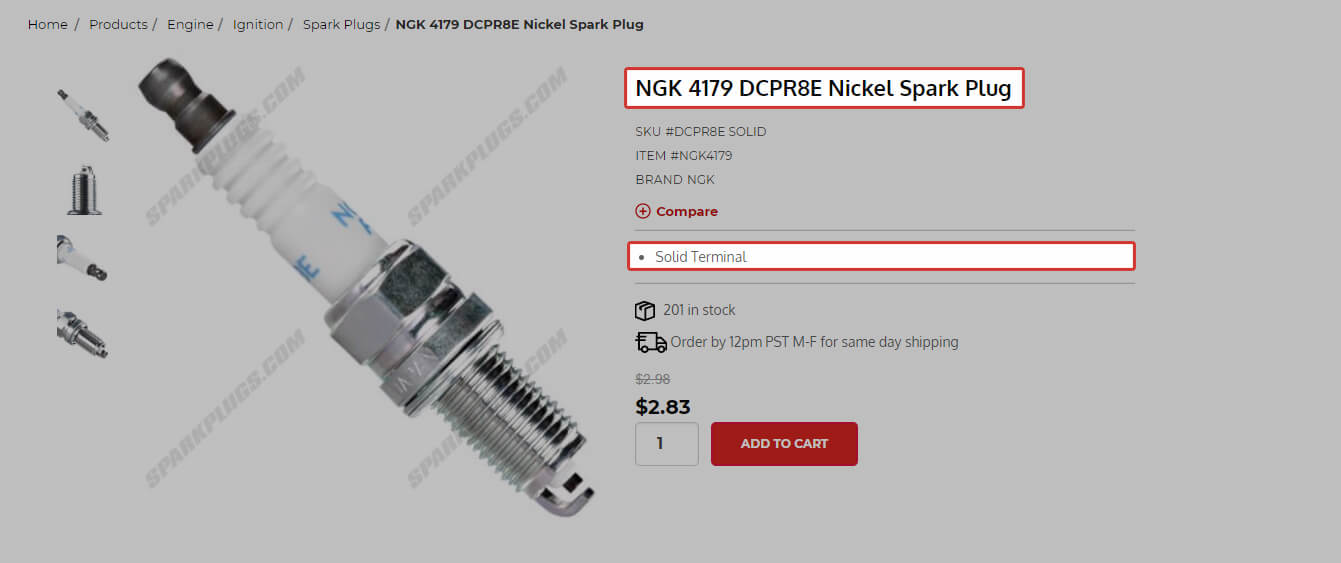
#3 - What is the difference between NGK BPR4ES and BPR6ES?
Again using our NGK numbering system, we find that this first number designates the heat range. We also see that an NGK 6 is 2 heat ranges colder than an NGK 4.
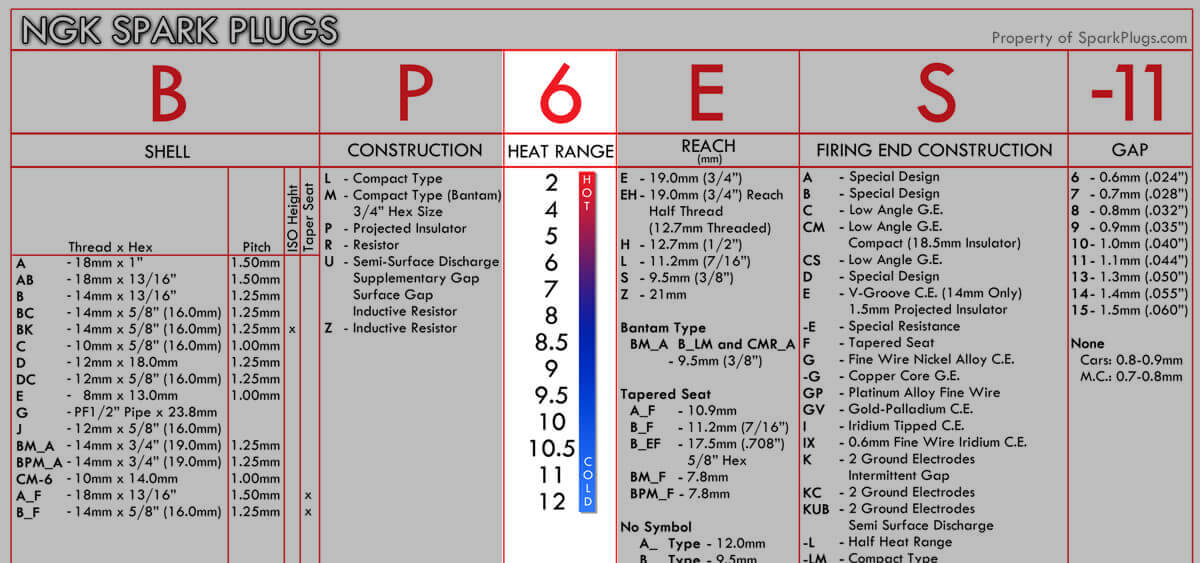
#4 - Let's take a non spark plug example. We've used the cross-reference to find the NGK/NTK equivalent to a Denso oxygen sensor #234-3008. The results give us two NGK/NTK equivalents, 24092 and 22065.
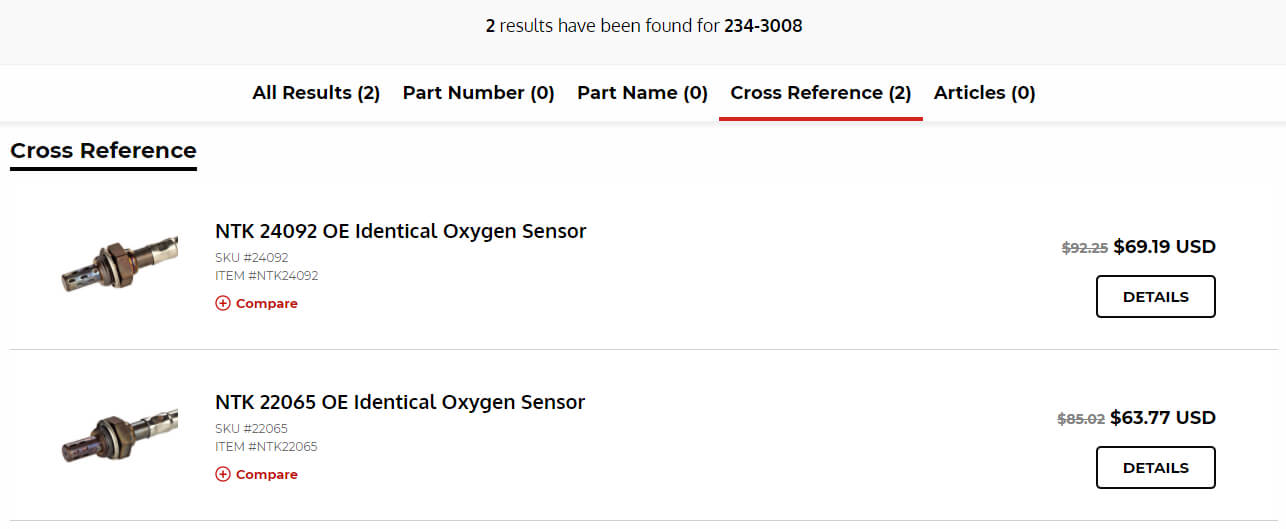
Looking at the pictures, the two NGK/NTK sensors appear identical. By using the "Compare" tool and viewing the specs, we find that 22065 features a 445mm or 17.5" lead wire, while 24092 features a 521mm or 20.5" lead wire. Knowing the needed distance between our sensor and plug will help us determine if the 12.5" or 15.5" lead wire would be a better fit.
